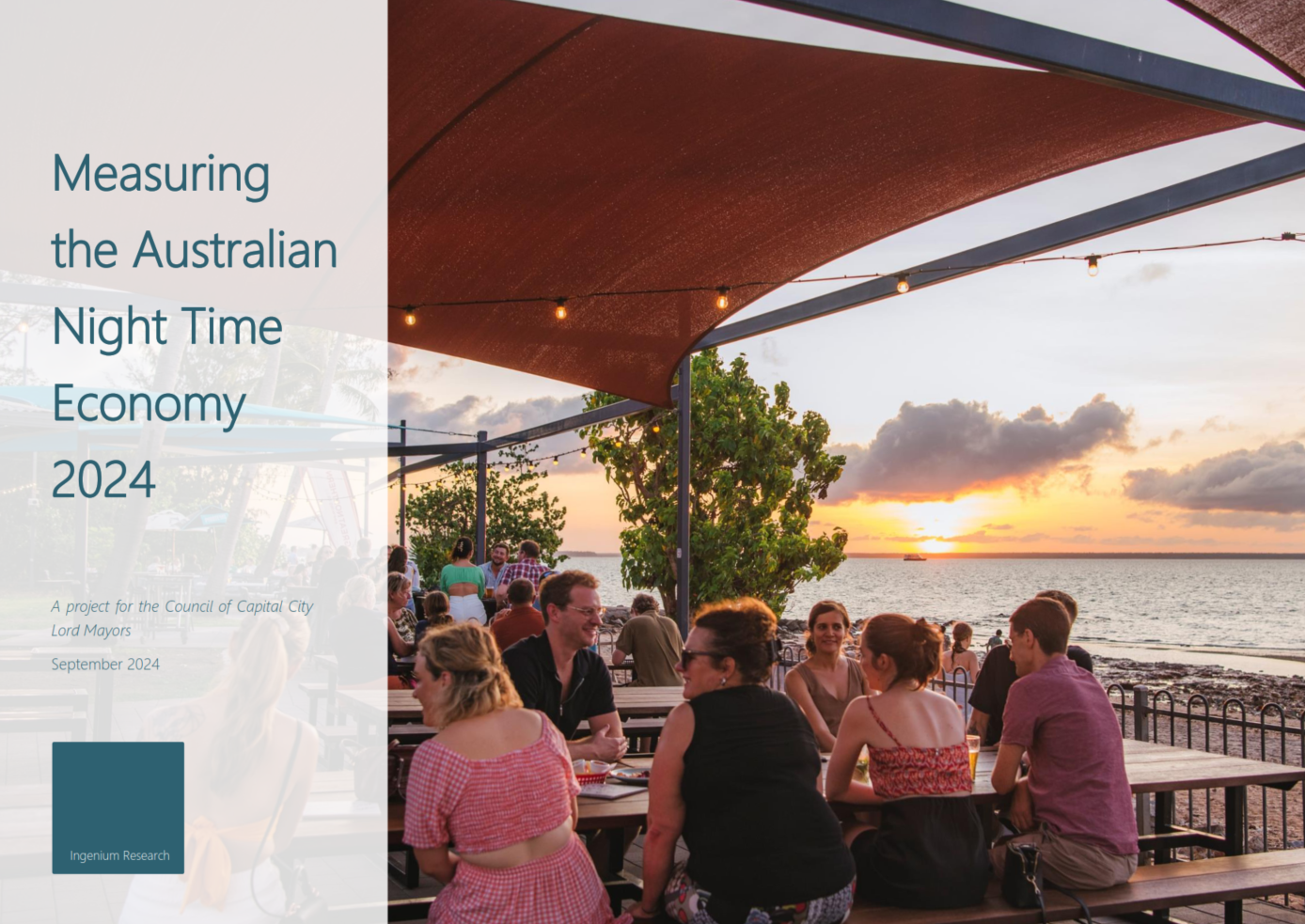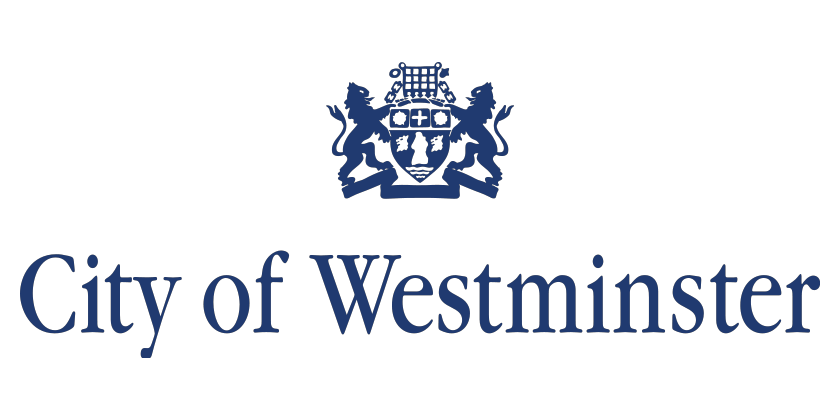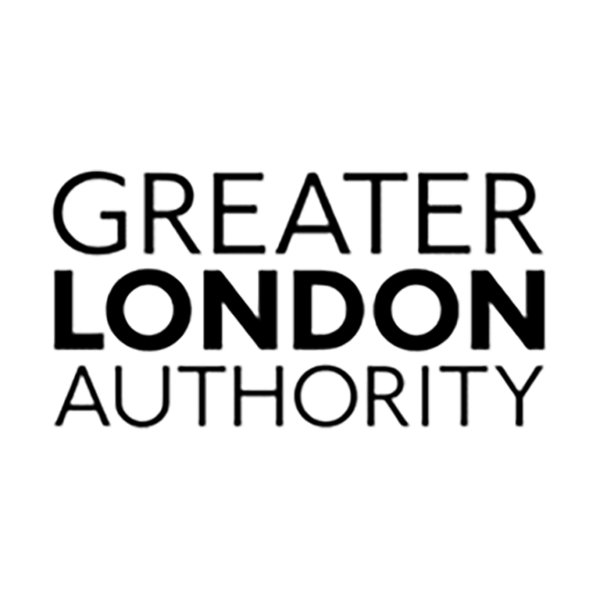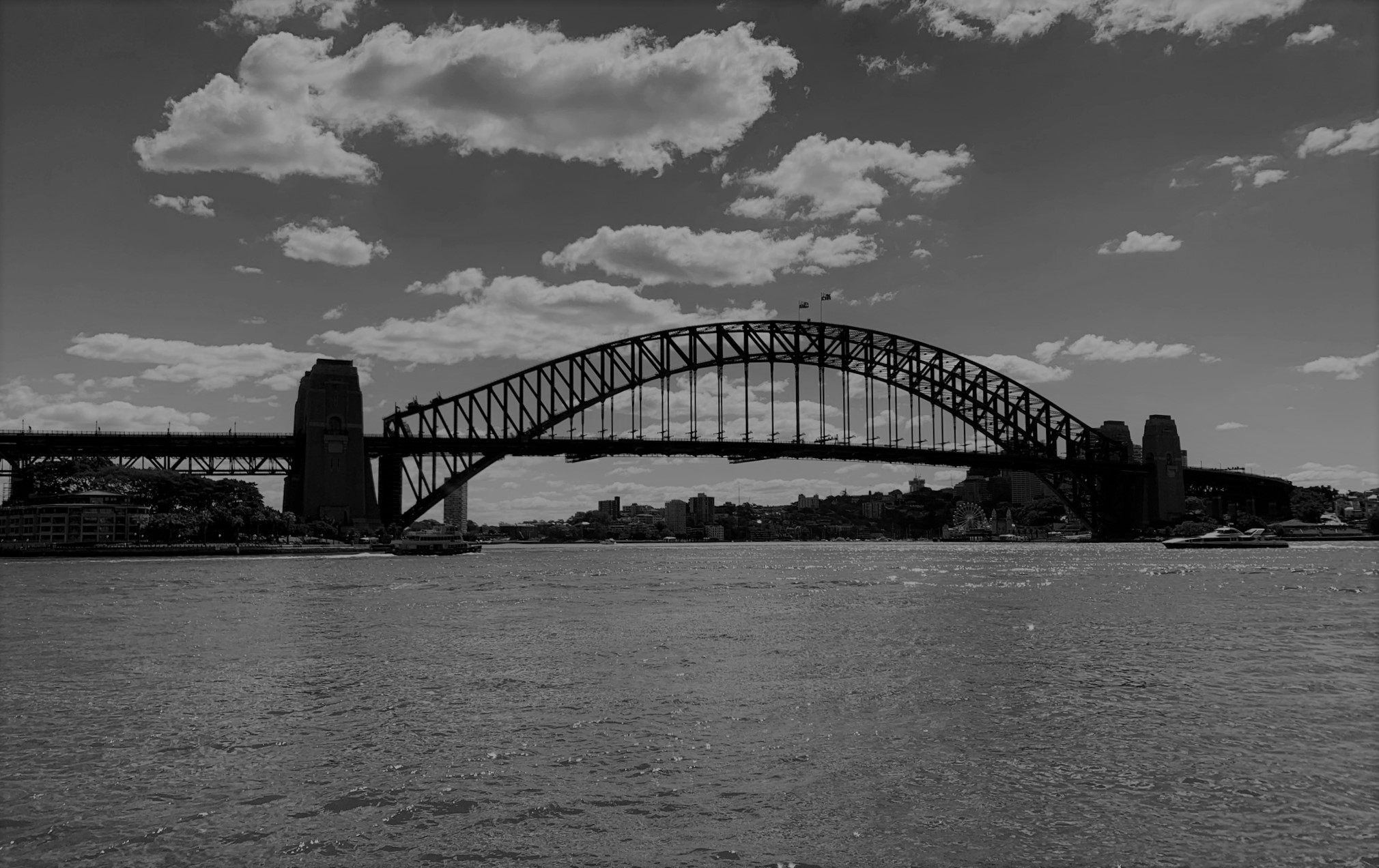Ingenium Research

For the Council of Capital City Lord Mayors, Australia
Following the completion of the Sydney NTE Cost Benefit Analysis, the analytical approach was commissioned by the NLGDAAC (now LGSCN) supported by CCCLM for a number of different councils across Australia. Terry and Andrew developed the application of the Night Mix Index methodology for measuring Australia’s NTE and have been involved in subsequent iterations since its inception.
These studies have provided the first insights into establishments and employee numbers across the sector and its supporting and dependent supply chain. Sales revenue was added as a third aspect of measurement of the economic benefit of the sector. All studies have been conducted at Federal, State / Territory and LGA levels. The key statistics for the NTE were proportioned to overall economy numbers and percentages, at all three levels of geography.
In 2016-17 the research was extended to 88 council areas across Australia, opening the research up to a greater variety of key LGAs. This approach was continued in 2018. Following the release of the report Ingenium sought to assist CCCLM in widening interest through membership of LGSCN in presenting the NTE methodology and data to a number of NSW and Victorian councils.
For City of Gold Coast Council, Queensland, Australia
The characteristics of the Gold Coast NTE are distinctive compared to many other NTEs, with its activities distributed across many precincts, rather than focused on a single central hub or CBD. Each of these precincts has its own unique characteristics, strengths and needs, which required understanding in greater detail.
This project drew these out, through the identification and analysis of twelve key Gold Coast NTE precincts, categorised as Prime (well established NTEs), Growth (up and coming NTEs) and Distinctive (small but unique NTE offerings).
This provided the City of Gold Coast with valuable insights to enable the Council to make the most effective evidence-based decisions in relation to supporting its NTE.
Fine grain analysis of economic trends in food, drink, and entertainment activities were provided for each of the twelve precincts, which was supplemented with Google and alcohol licensing geocoded data to map and identify clusters of activity at a street level (below).
The NTE’s linkages with residential population and crime trends were also analysed at this precinct level.
The project analysed the interrelationship between the NTE and local and state policies, plans, investments, and news stories and determined their likely impact. A total of 27 considerations were identified in the final report. Fifteen of these related to the NTE in general, with the remainder being precinct specific.
For Canterbury Bankstown Council
We were commissioned by Canterbury Bankstown Council (CBCity) to support their newly published NTE Action Plan by determining the sub-LGA economic impact of their NTE. This was complemented by mapping NTE business clusters and their opening hours to determine the area’s “night time intensity” rating.

For the Council of Capital City Lord Mayors
We were commissioned by the Capital Cities Committee of Lord Mayors to investigate potential improvements to NTE research. The study included improvements in existing published data as well as potentially new datasets that could provide additional socio-economic perspectives of NTE performance.
The project reviewed best global practice across 140+ publications including government reports, academic papers and others, to understand the kinds of applied metrics and information that are in use. Following this desk research over 100 datasets were identified, both internationally and within Australia. They were assessed to determine the feasibility of inclusion in NTE measurement.
After client discussion a sub-set of the datasets was taken to viability testing (in terms of geography, reporting periods, data quality, inter-state compatibility). This resulted in thirteen datasets that could be used in annual NTE research reporting.

For City of Sydney Council
The City of Sydney Council commissioned Ingenium Research to study postcode level Night Time Economy (NTE) economic and crime data to understand the impact of policy approaches regulating licensed premises within the Local Government Area (LGA) after 2012. This included the New South Wales (NSW) Liquor Amendment Act 2014, which came into effect on 24 February 2014.
The study aimed to understand changes in the economy and in crime at night (6pm to 6am) and over the period July 2013 to June 2017, and to consider the concentration and mix of business types that support a safe and vibrant NTE.
The research had the following key objectives:
• Establishing a coherent view of trends in the postcodes across the Core NTE and the whole economy compared with Sydney LGA, neighbouring LGAs and NSW.
• Reviewing and interpreting trends in data on differing assault types (including alcohol related non-domestic) occurring between the hours of 6pm and 6am.
• Assessing these trends alongside changes in the NTE economy to understand correlations, to examine characteristics that could help lead to lower crime rates.
The research findings were particularly interesting with regard to the third objective. The economic aspects were updated during 2019.
For Brisbane City Council
Following the release of the 2009-2015 NTE report by the National Local Government Drug and Alcohol Advisory Committee (NLGDAAC – now Local Government Safe Cities Network (LGSCN)), Brisbane City Council commissioned Ingenium Research to provide additional insight about specific NTE centres in the Brisbane LGA. These were Brisbane CBD, Herston / Fortitude Valley and West End.
Brisbane LGA, is a disproportionately large administrative area compared to other metropolitan based LGAs in major Australian cities. Establishment count data below LGA level was not readily available through the ABS website. The project required data from the ABS Business Register Unit.
Ingenium Research analysed counts of establishments, employment and sales turnover across the LGA for 2012 to 2016 and for the three postcode areas, followed by the collation of the analysis into report tables, which summarised the findings and which looked at the contribution of the NTE to the whole economy.
The research investigated differences in concentrations of drink, food and entertainment led NTE establishment within the three postcode areas.

For Westminster City Council, London, UK
Andrew and Terry were both engaged in this major study for Westminster City Council. Its primary focus was the scale, dynamics and impact of NTE economic activity in the Stress Area of the West End, or WESA, compared to the two stress areas of Edgware Road and Queensway/Bayswater and the wider local authority geography of Westminster City Council which has the largest NTE in the UK.
The study included research into the NTE roles and outputs of police, health and Transport for London (TfL) within the broader NTE supply chain and extensive dialogue with members of the business community representing London’s Theatre Land and the main shopping hubs of Oxford Street and Regent Street.
The study recommended a review of Professor Jonathan Shepherd’s Cardiff Model in the management of the impacts of violent crime in Westminster and the wider use of the Soho Alcohol Recovery Unit as a reactive model.
It engaged directly with NTE establishments for the first time on the specific spread of their commercial activities across the four 6-hour periods of a 24 hour cycle. The CBA was conducted in parallel with an NTE behavioural study led by Philip Hadfield, within the West End and the control area of Fitzrovia.


For the Greater London Authority, London, UK
Terry was involved in the development of the research agenda for the GLA Night Time Commission – which reported to the Mayor of London. The study was led by Westminster University into the NTE socioeconomic characteristics and the planning policy actions and decisions of four selected London boroughs.
The four boroughs selected by the commission were Croydon, Lambeth, Waltham Forest and Westminster. Each borough was selected for different reasons. The study showed that the borough of Waltham Forest might be termed a ‘nascent’ NTE. The study looked more closely at structures and policies employed in two identified ‘Hot Spot’ – within the central Croydon business area and Brixton.
This work provided background evidence for the new Night Time Commission as it began to consider policy recommendations to be made to the Mayor.
The programme resulted in a first report by the GLA Night Time Commissioner. Both Terry and Philip Hadfield were asked to provide evidence to the enquiry and subsequently Terry engaged with the GLA research team that was considering the future parameters of recommendations for NTE measurement.

For Auckland Council, New Zealand
This study included a comparison of the economic performance of the NTEs in Auckland and its CBD with the Australian LGA geographies of Brisbane, Melbourne and Sydney. The work was commissioned to identify a first base view of the economic impact of the NTE in New Zealand by addressing questions such as:
• How large is the Night Time economy and in comparison, to the overall economy?
• How is the establishment structure of the NTE changing over annual time frames?
• What is the economic role of the NTE in key urban centres or CBDs?
The study examined the size and relative role of the New Zealand NTE in the overall economy and then analysed the regional NTE roles of the three geographic hinterlands of the cities of Auckland, Christchurch and Wellington.
Stats NZ provided data on employment, firm numbers and sales revenue at all levels of geographic analysis which enabled us to look more closely at city centre NTE significance across the years from 2009 to 2013.

For City of Sydney Council
This study of the City of Sydney LGA NTE is, to our knowledge, the first ever full cost benefit analysis of the direct and indirect economic impacts of a local Night Time Economy. The study was commissioned by the City of Sydney as part of its wide-ranging strategic vision for Sydney 2030. Its components included:
Detailed establishment level analysis drawn from Australian Bureau of Statistics activity classifications and establishment data
• A comparison of results with Sydney’s own Floor establishment Space Census
• Cross referenced analysis to similar data for establishments, employment and sales, held by Dun & Bradstreet, Australia
• A comparison of Sydney LGA NTE with Greater Sydney and NSW.
• Discussions with senior officials in Policing, Transport, Health, Licensing, and Local Government to understand both their challenges and the use of data.
Based upon research commissioned through the NSW Bureau of Transport Statistics we examined the 24-hour transport modes of residents, tourists and employees to help understand NTE related movements.
We were able to study hour by hour movement.
A summary of findings may be obtained by contacting us.
Are you satisfied with the evidence that supports your decisions? Do you have a measurement challenge to discuss? If so, reach out to us for an informal chat and to find out more about how we can help you.
© 2024 All rights reserved